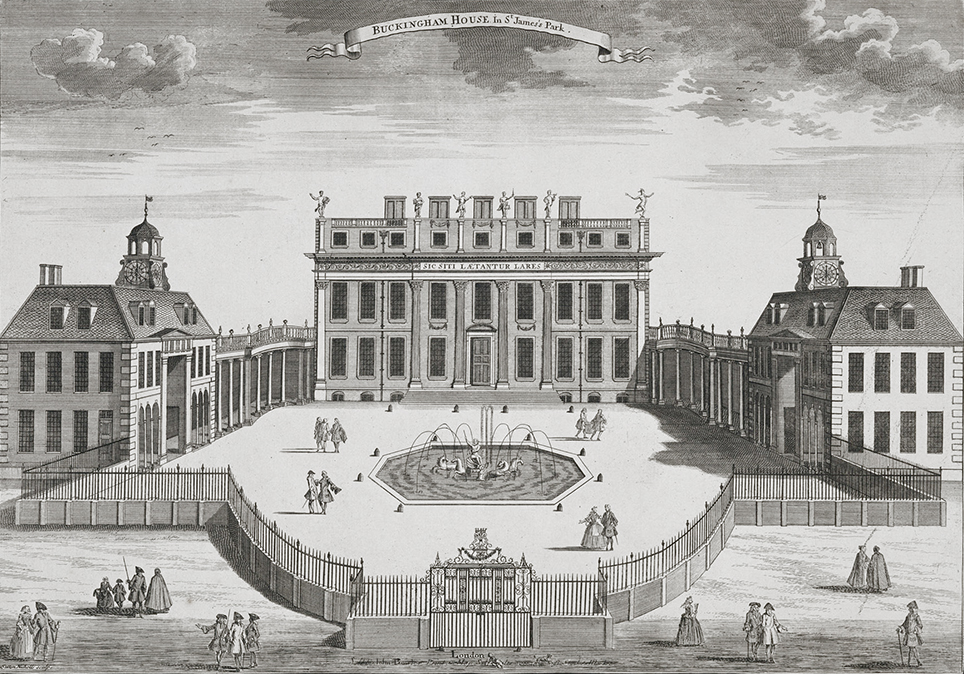William Winde on:
[Wikipedia]
[Google]
[Amazon]
Captain William Winde (c.1645–1722) was an English gentleman 
 *
*
architect
An architect is a person who plans, designs, and oversees the construction of buildings. To practice architecture means to provide services in connection with the design of buildings and the space within the site surrounding the buildings that h ...
, whose military career under Charles II, resulting in fortifications and topographical surveys but lack of preferment, and his later career, following the Glorious Revolution
The Glorious Revolution, also known as the Revolution of 1688, was the deposition of James II and VII, James II and VII in November 1688. He was replaced by his daughter Mary II, Mary II and her Dutch husband, William III of Orange ...
, as designer or simply "conductor" of the works of country houses, has been epitomised by Howard Colvin
Sir Howard Montagu Colvin (15 October 1919 – 27 December 2007) was a British architectural historian who produced two of the most outstanding works of scholarship in his field: ''A Biographical Dictionary of British Architects, 1600–18 ...
, who said that "Winde ranks with Hooke, May
May is the fifth month of the year in the Julian and Gregorian calendars. Its length is 31 days.
May is a month of spring in the Northern Hemisphere, and autumn in the Southern Hemisphere. Therefore, May in the Southern Hemisphere is the ...
, Pratt and Talman as one of the principal English country house
image:Blenheim - Blenheim Palace - 20210417125239.jpg, 300px, Blenheim Palace - Oxfordshire
An English country house is a large house or mansion in the English countryside. Such houses were often owned by individuals who also owned a Townhou ...
architects of the late seventeenth century" (Colvin 1995, p 1066).
Winde was born in Holland
Holland is a geographical regionG. Geerts & H. Heestermans, 1981, ''Groot Woordenboek der Nederlandse Taal. Deel I'', Van Dale Lexicografie, Utrecht, p 1105 and former provinces of the Netherlands, province on the western coast of the Netherland ...
to English parents.Geoffrey Beard, "William Winde and Interior Design", ''Architectural History'' 27, Design and Practice in British Architecture: Studies in Architectural History Presented to Howard Colvin (1984:150-162)
Works
His work included: *Hampstead Marshall, (for William Craven, 1st Earl of Craven), where he completed a house begun by Sir Balthazar Gerbier, c. 1662–1688, from the dates on many surviving drawings. Thomas Strong, mason; Edward Pierce, wood-carver; Edward Goudge, plasterer. Destroyed by fire 1718. Gate piers remain. *Caversham Park, (also for Lord Craven), rebuilding the Elizabethan manor house after 1660. The estate was sold in 1697. * Coombe Abbey, nearCoventry
Coventry ( or rarely ) is a City status in the United Kingdom, cathedral city and metropolitan borough in the West Midlands (county), West Midlands county, in England, on the River Sherbourne. Coventry had been a large settlement for centurie ...
(for the Earl of Craven). Rebuilt centre block and north wing, c. 1682–88. North wing demolished.
*Buckingham House (for John Sheffield, 1st Duke of Buckingham), 1702–05. Completely embodied in Buckingham Palace
Buckingham Palace () is a royal official residence, residence in London, and the administrative headquarters of the monarch of the United Kingdom. Located in the City of Westminster, the palace is often at the centre of state occasions and r ...
.
*Powis House, Lincoln's Inn Fields
Lincoln's Inn Fields is located in Holborn and is the List of city squares by size, largest public square in London. It was laid out in the 1630s under the initiative of the speculative builder and contractor William Newton, "the first in a ...
, London
London is the Capital city, capital and List of urban areas in the United Kingdom, largest city of both England and the United Kingdom, with a population of in . London metropolitan area, Its wider metropolitan area is the largest in Wester ...
(for First Marquess of Powis) 1682–89. (later Newcastle House).
* Castle Bromwich Hall 1686–1703; the gardens here have been restored according to Winde's plans.
Possible attributions include:
 *
*Belton House
Belton House is a Grade I listed country house in the parish of Belton near Grantham in Lincolnshire, England, built between 1685 and 1687 by Sir John Brownlow, 3rd Baronet. It is surrounded by formal gardens and a series of avenues lead ...
near Grantham, Lincolnshire
* Cliveden House, Buckinghamshire (for George Villiers, 2nd Duke of Buckingham
George Villiers, 2nd Duke of Buckingham, 19th Baron de Ros (30 January 1628 – 16 April 1687) was an English statesman and poet who exerted considerable political power during the reign of Charles II of England.
A Royalist during the Engl ...
) c.1676-8. Destroyed by fire 1795 and rebuilt.
* Wotton House, Buckinghamshire
Capt. Winde also gave designs for parterre
A ''parterre'' is a part of a formal garden constructed on a level substrate, consisting of symmetrical patterns, made up by plant beds, plats, low hedges or coloured gravels, which are separated and connected by paths. Typically it was the ...
gardens
Family
Winde married Magdalene, daughter of Sir James Bridgeman. His correspondence with his cousin Lady Mary Bridgeman of Castle Bromwich Hall, is at the Staffordshire Record Office.References
*Howard Colvin
Sir Howard Montagu Colvin (15 October 1919 – 27 December 2007) was a British architectural historian who produced two of the most outstanding works of scholarship in his field: ''A Biographical Dictionary of British Architects, 1600–18 ...
, ''A Biographical Dictionary of British Architects, 1600-1840'' (3rd ed. 1995)
17th-century English architects
1640s births
1722 deaths
Dutch people of English descent
English military engineers
{{England-architect-stub